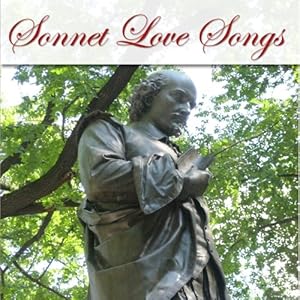by Douglas Grudzina
The series is going to be called College and Career Readiness: Writing - Levels 9-12, and is based on Common Core State Standards.
You can expect to see Levels 10 and 11 available in our January 2013 catalogue. (There’s a good reason we’re starting in the middle of the series, but that’s another post for another day.)
Some of you might want to call what I’ve been working on the past few weeks a series of rubrics because there is a distinct rubric for each grade level with articulated increasing expectations. A top-scoring 12th-grader’s piece is a significantly more sophisticated and better-written piece than a top-scoring 9th-grader’s.
But I believe the term “rubric” denotes the entire system. It might be convenient to talk about the “9th-grade rubric” or the “12th-grade rubric,” but these “rubrics” are really only parts of the larger, comprehensive rubric that traces a student’s growth from his entry into high school to his graduation and provides language to discuss successes, challenges, and future plans. And that’s the thing about rubrics; they are much more about the quality than the score.
The thing about rubrics is that they are not about the grade.
Let’s be really, really honest with each other. Grades are so vague and relative as to be almost meaningless. We all know that, on some hypothetical, ideal level, a grade of “A” denotes “excellent” work, and an “F” denotes “poor” work, but what does that mean? What does “excellent” look like? How poor does writing have to be to be acknowledged as “poor”?
Fill in the blanks in the following sentence (you know you can): “This same essay would receive an ‘A’ in Mr./Ms.______’s class, and a ‘C’ in Mr./Ms.______’s class.”
We accept as a given that some teachers are “easy scorers,” and some are “hard scorers”; but shouldn’t all teachers at the same grade level score pretty similarly? Shouldn’t they all recognize excellent work as excellent, poor work as poor, and average work as average?
If they were all working from the same scoring instrument (fancy-talk for rubric), they would.
Consider the following descriptions:
- Writing is fluid and articulate. Tone and style seem natural and inevitable given the topic, purpose, and audience of the piece.
- The distinctions between the student’s ideas and those from other sources are explicit.
- If appropriate to the topic, audience, and purpose, narrative techniques enhance the overall impact of the piece.
Let’s say the above describes the top score of a twelfth-grade essay. There might be some discussion about what constitutes “fluid and articulate” writing, but the student either draws distinctions between his own claims and the claims of his sources or he doesn’t. But the rubric clearly communicates the expectation that top writing is fluid and articulate, and the distinctions between student claims and source claims are explicit.
That’s the thing about rubrics; they’re communicative.
You can give the above excerpt to just about everyone—principal, parent, student, teacher, aide, substitute, national press … and they’d all pretty much understand what your school means by “excellent.” There are no numbers, no weird scales or formulas—just the descriptions of our expectations: writing that is articulate, a style that seems natural, and distinctions between the student’s ideas and those from other sources that are explicit.
When Janyce sits down to write her essay, she knows what she needs to do.
When Janyce’s father reads over her work, he knows what to look for. When the principal reads all the essays to pick one to publish in the Times, she’s got criteria by which to choose a good one. The teacher and aide know what they’re looking for when they grade the paper, and the substitute has words he can use to explain Janyce’s grade to her in the teacher’s absence.
So rubrics aren’t about grades; they communicate quality.
And the thing about rubrics is that they describe not only the aspired-to top quality but the good, fair, average, mediocre, and poor as well. Janyce’s essay might not (yet) be top quality, but how not-top-quality is it? And how can we tell?
Let’s look at how a rubric might describe a less-than-excellent paper to communicate to all concerned parties where the student is succeeding and where she needs to improve. In the excellent essay, the writing was “fluid and articulate,” and the distinctions were “explicit.”
In a good-but-not-excellent essay,
- Writing is fluid and articulate. Tone and style seem natural and inevitable ...
and
- The distinctions … are explicit.
In an average essay,
- Writing is competent … tone and style seem forced, contrived, or self-conscious,
and
- The distinctions … are clearly suggested.
In a less-than-average-but-not-poor essay,
- Tone and style are … appropriate [but] lack interest and voice,
and
- The distinctions … are usually apparent.
And in a poor essay,
- Tone and style [are] inconsistent,
and
- Distinctions [are] usually apparent.
The thing about rubrics is that they focus on the quality of the work and help to keep everyone on the same page. Mr./Ms. ___, the “easy grader” can’t be more forgiving of the unclear distinctions and bump the ranking of the paper up, and Mr./Ms. ____, the “hard scorer” can’t be excessively severe and evaluate an otherwise fine paper too harshly. The teacher who “likes” Janyce and the teacher who “doesn’t like” Janyce will find themselves evaluating her work by the same criteria. Janyce’s principal will know the criteria by which she will choose an essay for publication in the paper, and Janyce’s father will know where Janyce succeeded in this essay and what aspects of her writing she still needs to improve.
It almost doesn’t matter what score (or grade) the essay actually gets. A
well-meaning “A” from a “high scorer” and a heavy-handed “C” from a “low scorer” don’t really mean all that much anyway—not if our goal is to make Janyce a better writer, a College and Career Ready writer.
The thing about rubrics, is that they are instructional tools as much as they are evaluative tools.













